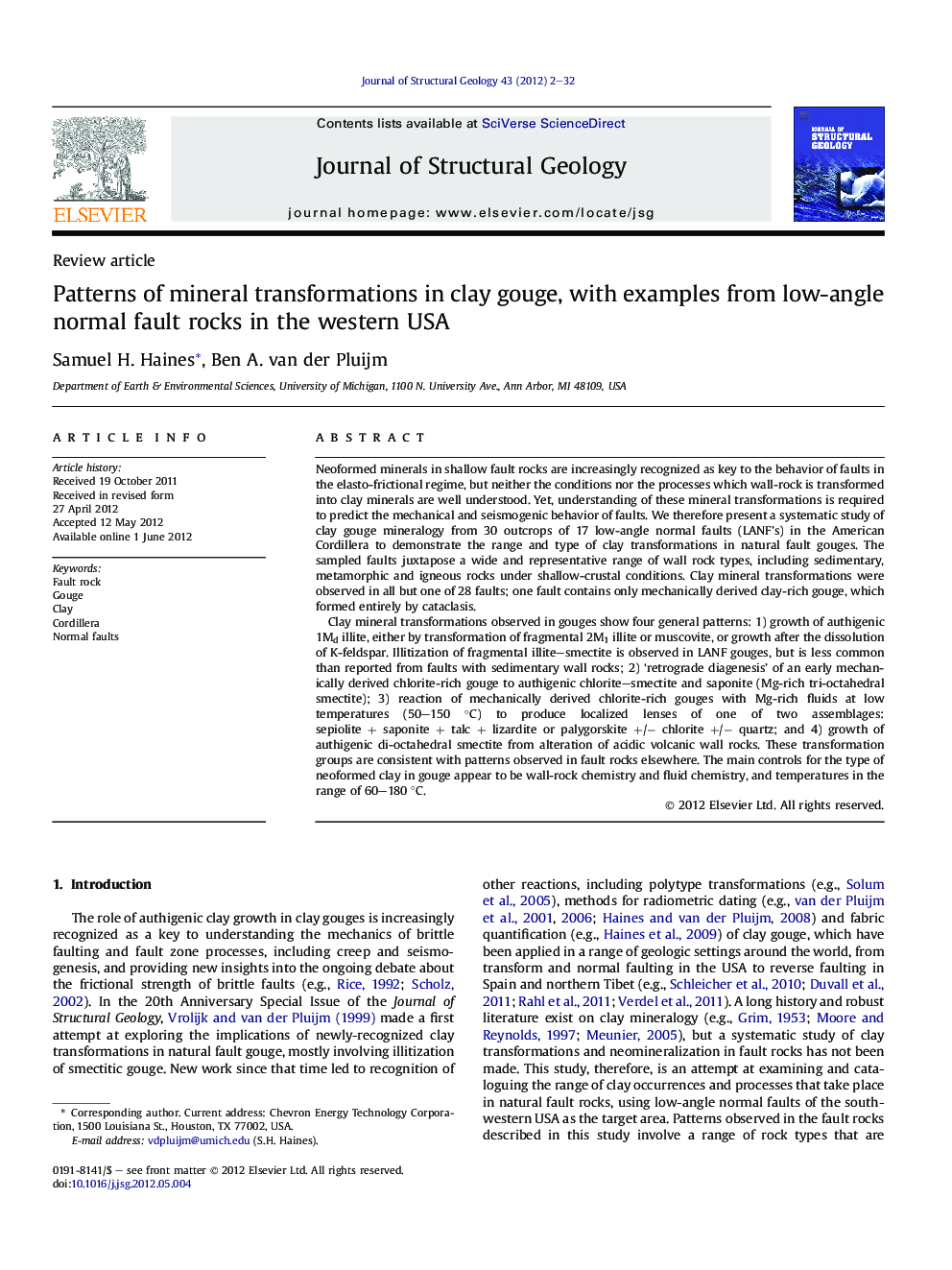| Article ID | Journal | Published Year | Pages | File Type |
|---|---|---|---|---|
| 6445109 | Journal of Structural Geology | 2012 | 31 Pages |
Abstract
Clay mineral transformations observed in gouges show four general patterns: 1) growth of authigenic 1Md illite, either by transformation of fragmental 2M1 illite or muscovite, or growth after the dissolution of K-feldspar. Illitization of fragmental illite-smectite is observed in LANF gouges, but is less common than reported from faults with sedimentary wall rocks; 2) 'retrograde diagenesis' of an early mechanically derived chlorite-rich gouge to authigenic chlorite-smectite and saponite (Mg-rich tri-octahedral smectite); 3) reaction of mechanically derived chlorite-rich gouges with Mg-rich fluids at low temperatures (50-150 °C) to produce localized lenses of one of two assemblages: sepiolite + saponite + talc + lizardite or palygorskite +/â chlorite +/â quartz; and 4) growth of authigenic di-octahedral smectite from alteration of acidic volcanic wall rocks. These transformation groups are consistent with patterns observed in fault rocks elsewhere. The main controls for the type of neoformed clay in gouge appear to be wall-rock chemistry and fluid chemistry, and temperatures in the range of 60-180 °C.
Related Topics
Physical Sciences and Engineering
Earth and Planetary Sciences
Geology
Authors
Samuel H. Haines, Ben A. van der Pluijm,
